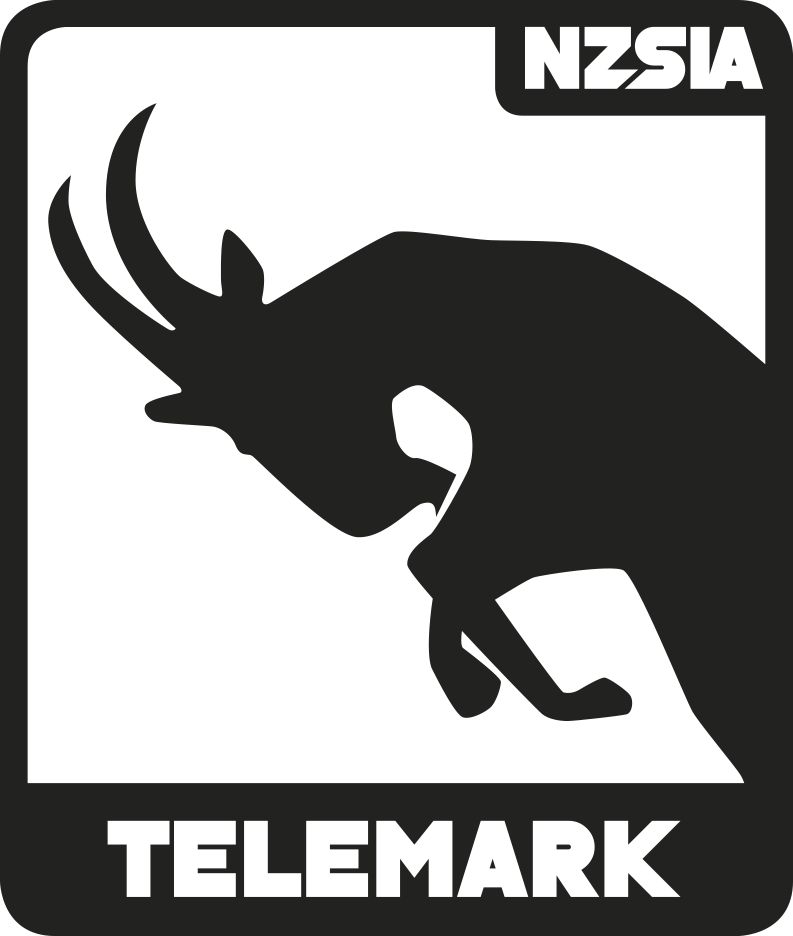Situational Telemark section provides key technical focuses for skiing in different conditions and terrain. These skills are not intended to be used in isolation but should be considered alongside good decision-making, experience, and sound technical fundamentals. Each environment presents unique demands that may require different levels of activity, movement, and tactics
Ice

 Technical Know-how
Technical Know-how
What’s New
Skiing on icy surfaces requires subtlety, precision, and progressive movements. Grip is limited, so balance, edging, and pressure must be carefully managed to maintain control and flow.
Performance Tips
Foot to Foot Balance – Manage Weight Distribution
- Avoid over-pressuring the lead ski at the end of the turn, as this can cause chatter or a break in edge grip. Distribute weight accurately from ski to ski to maintain connection with the snow throughout the turn.
Edging– Leg-driven
- Initiate movement from the legs and allow them to guide the body. Angulation created by the legs supports edge grip and helps maintain a stable upper body.
Progressive Movement
- Make continuous adjustments through each turn. Subtle pressure changes and smooth lead and edge changes are key for maintaining grip.
Active Stance and Balance – Wide Platform
- A slightly wider stance improves early edge engagement and provides a more stable base if grip is compromised.
Feet and Legs Engagement
- Rely on the lower legs for fine balance control rather than large movements from the upper body. Keep the torso stable and aligned over the feet.
Skills
Edging – Gentle, Progressive Tipping
- Tip the skis gradually with minimal pressure. Avoid sudden or aggressive edge movements. Follow the edge with intention and subtlety.
Edging – Centre of Gravity Movement
- Move the centre of mass diagonally toward the finish of the turn to stay balanced and ready for the next edge change. This allows smoother transitions between turns.
Edging – Inclination and Angulation
- Incline the lower leg early in the turn to initiate edge engagement, then gradually build angulation toward the end of the turn. Keep momentum flowing without settling into static positions.
Steering – Stable Upper Body
- Maintain your upper body aligned down the fall line, pointing at the apex of the next turn. Let the legs steer the skis underneath while the upper body remains quiet and anticipates the next turn direction.
Steering – Equal Tipping
- Tip both skis together throughout the turn. This keeps the track wide and consistent, helping maintain even edge grip and consistent turn shape.
Steering – Subtle Turn Shaping
- Allow the skis to release and engage with minimal upper body input. Steer with the legs and apply forward pressure gently to help the skis grip through the turn.
Lead Change – Smooth and Consistent
- Make lead changes at a steady rate with consistent muscular tension. Abrupt or uneven movements can break the ski’s connection with the snow.
Lead Change – Turn Size Awareness
- Maintain an even, well-timed lead change that suits the shape and size of the turn. Sudden shifts can compromise balance on icy terrain.
Lead Change – Timing and Alignment
- Flatten both skis as the feet pass through the transition. Keep the body aligned and centred over the skis to prepare for the next edge engagement.
Long Leg / Short Leg – Maintain Pressure
- Extend the inside leg while flexing the new outside leg simultaneously. This creates equal contact and pressure throughout the edge change and enhances grip on firm snow.



